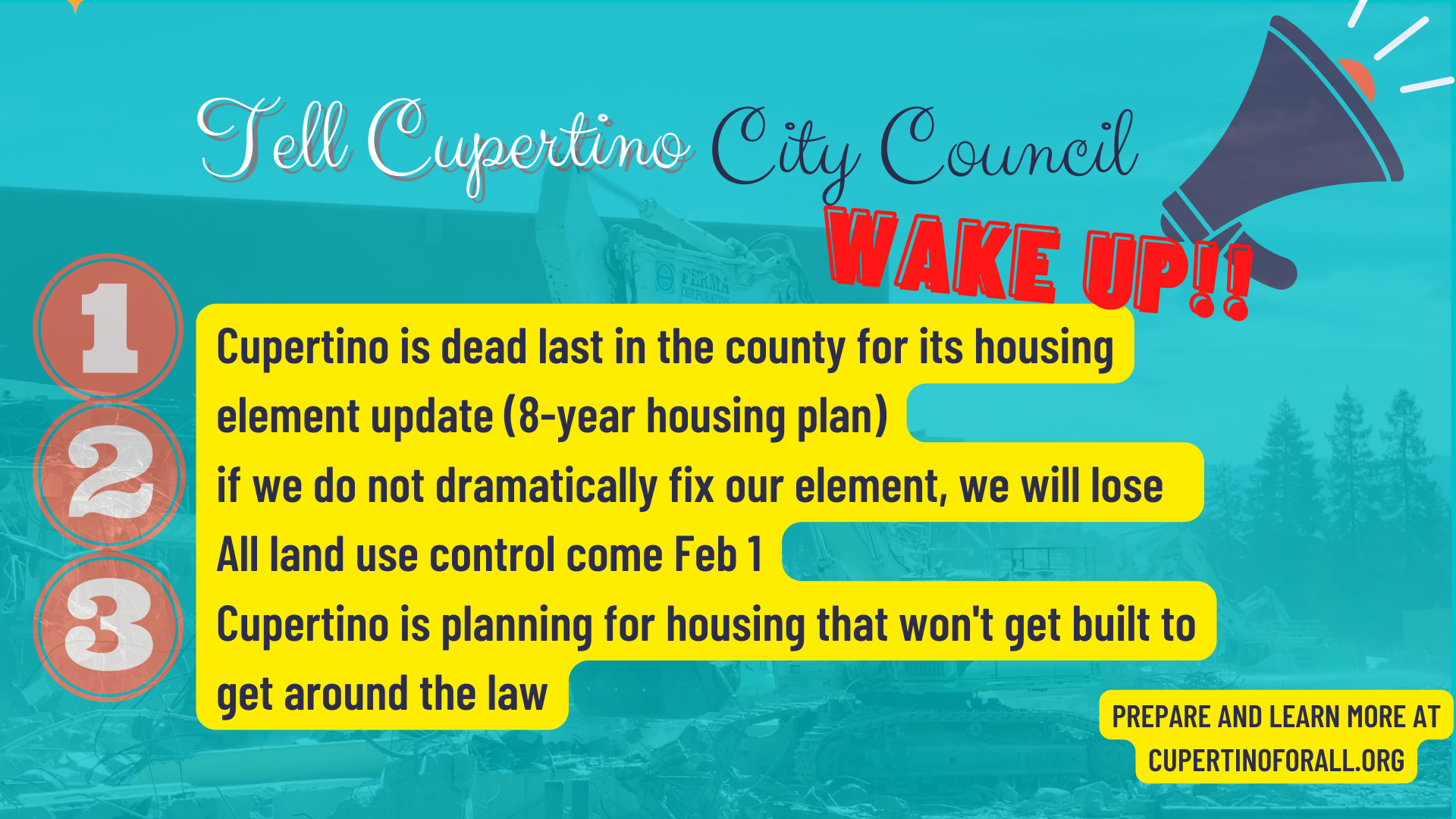This coming Tuesday, Nov 1, the Cupertino City Council will be having its next regularly scheduled biweekly session at 6:45pm. They may act as if this is just a normal council meeting, but our current circumstances in Cupertino are all but normal.
Come February 1, Cupertino will likely lose all local land use control under a policy known as the builder’s remedy—which will dramatically reshape everything about Cupertino. The builder’s remedy is designed to hold cities accountable that do not have a compliant housing element come 2023. Cupertino is extremely likely to have an uncertified housing element because (1) we are incredibly behind in the process, currently clocking it at dead last in the county and (2) our current draft fails to adequately address Cupertino’s role in mitigating the housing crisis.
Housing Element 101
Every City in California has a general plan (GP). You can think of this like the City’s constitution, or a comprehensive vision for the city. Within the GP, there are numerous chapters or “elements” that give teeth to said vision. The housing chapter of the GP is fittingly referred to as the Housing Element. Every 8 years, The State of California requires all the cities to update their housing element to meet their Regional Housing Needs Assessment (RHNA)—the # of homes that a city is assigned to build at every income level. Cupertino has to build at least 5,000 homes realistically—at various income levels, equivalent to 4 times our last assignment.
For the past year, cities have been updating their housing elements through a lengthy process meant to explain how they will go about building those 5,000 homes, as well as how they will modernize their housing laws to meet the extreme needs we are seeing up and down the state.
This is the first housing element update that is truly consequential, with specific guidance on how to properly draft your element, including plans to “affirmatively further fair housing”—i.e. dismantle segregation. You also must do your homework to show how you plan for the housing to actually feasibly get built in the next 8 years. Failure to do so results in heavy fines or loss of local control of how your land is used.
Why does this matter?
California has the worst housing crisis in the country. Rents in Cupertino easily exceed $3,500/month and homes at $2-3M in purchase price. Our best shot at creating a more stable housing market, so all of us have the homes we need to thrive, is right now through the housing element process. If we can view the housing element update as an opportunity, rather than an obligation to avoid, we can feasibly create the affordable, inclusive city that we all deserve. If we do this process wrong (which is looking to be the case), the consequences may hurt us all.
Just how behind is Cupertino?
Cupertino is dead last in Santa Clara County, and likely one of the most behind cities in the entire state. It’s almost November and everything must be done by January 2023. Let’s do some math!
What can we do about it?
Cupertino is already in a situation where we are unlikely to submit a compliant housing element on time. There are only 2 remedies at this point:
This current city council makes dramatic changes to their site inventory and listens to community feedback on how to best meet housing needs with the remaining stages of the housing element. They work in good faith with the State to make the required changes to reduce how long the builder’s remedy is active.
Revive the/a diverse stakeholder group—include voices that are not just older homeowners that align with Better Cupertino.
Reduce reliance on pipeline projects or add an even larger buffer to compensate—The current site inventory is going to get us dinged by HCD because 77% of the homes planned to account for Cupertino's 6th Cycle RHNA come from pipeline projects. Two pipeline projects in particular account for the bulk of that figure: 2402 homes at Vallco/The Rise, and 600 net new homes at The Hamptons. Combined, these two projects constitute some 84% of all pipeline project homes. Both have been approved for a number of years (2018 and 2016, respectively), but, to date, neither has built a single new home.
Admit failure; collaborate with the state moving forward—follow state guidance closely and work to put together a foot-faith, ambitious housing element that meets all of our housing needs.
Elect a new city council that will take this process more seriously and more or less redo significant portions of the housing element to make sure it is compliant.


